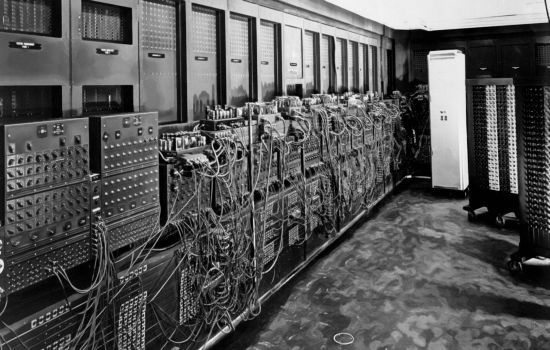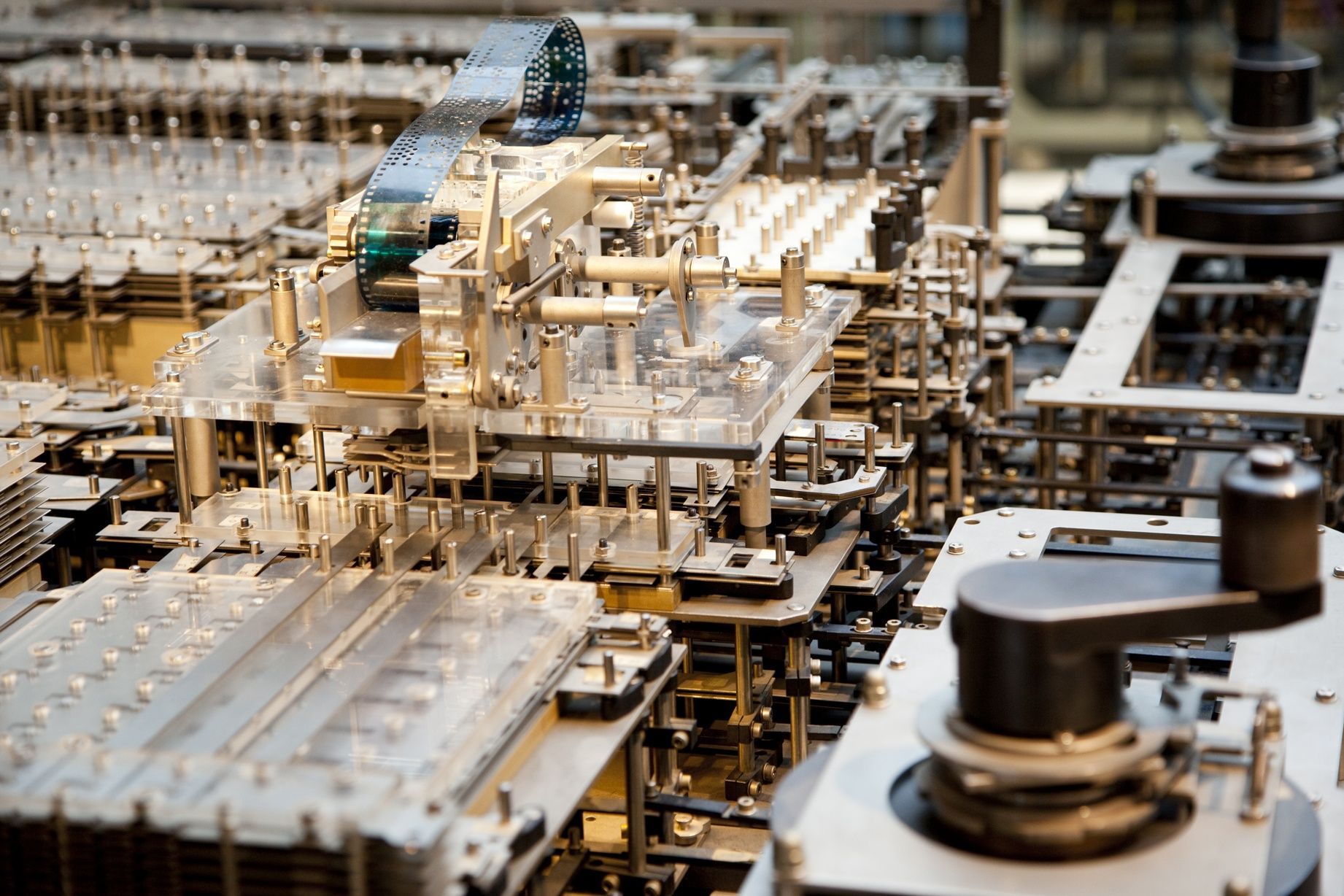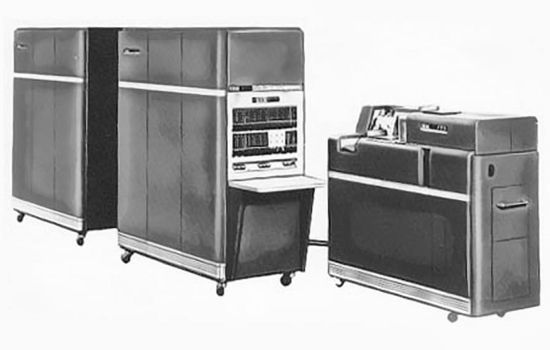C:\Games\DarkAges\Main_Computers



ENIAC
A monster of ballistic calculation

The ENIAC (Electronic Numerical Integrator and Computer) was a monster of a computer that filled an entire 170 square meter room. It was commissioned by the U.S. Army during World War II to improve its combat capabilities. For example, the ENIAC was to perform complex calculations of ballistic trajectories of bombs. Such work had previously also been done by computers, but this meant women with good mathematics and science degrees who performed these complex calculations with simple calculators. So the military needed more computing power and so the ENIAc was needed.
The US Army gave the machine to the University of Pennsylvania at the end of the war in 1946 when it was completed. It must have been an impressive sight to see this machine working with 18000 tubes, 7200 diodes, 1500 relays, 70000 resistors and 10000 capacitors, divided into 40 units, each 270 centimeters high. The amount of power required by the computational brain was enormous, and it is said that when the Philadelphia mainframe was booted up, even the lights flickered. The cost of the ENIAC was also immense, and it was only feasible because the U.S. Army was the client.
Already like the Atanasoff-Berry computer, the computer used electron tubes, which meant a much higher computing power than the Z3. The ENIAC still worked with conventional decimal system instead of the binary system of the Z3. The ENIAC is considered to be the first programmable electronic calculator. The ENIAC was programmed quite awkwardly by reconnecting the wiring and rotary switches, because the calculator had no instruction memory. This kind of programming still reminds very much of a telephone exchange. The input, on the other hand, was done via punched cards, as was common at that time. The ENIAC was finally switched off in 1955.

Table of contents
| YR | NAME | INVENTOR |
|---|---|---|
| — | Introduction |  |
| 1938 | Z1 – Z4 |  |
| 1941 | Atanasoff Berry Computer |  |
| 1943 | Harvard Mark I |  |
| 1943 | Colossus |  |
| 1945 | Whirlwind |  |
| 1946 | ENIAC |  |
| 1950 | IBM 650 |  |
| 1951 | UNIVAC |  |
| 1954 | TRADIC |  |
| 1960 | PDP-1 |  |

